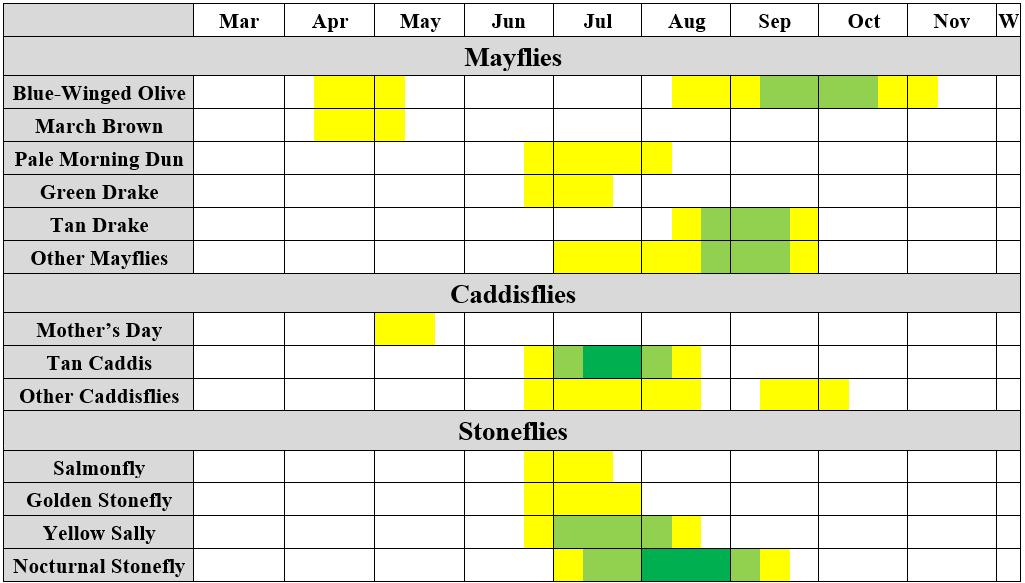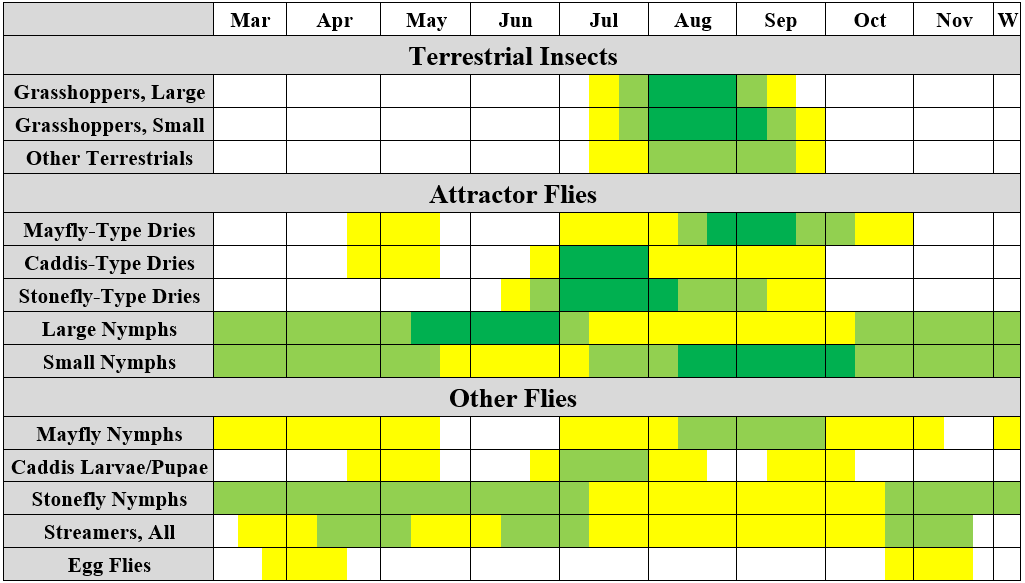Rough and rowdy, the Stillwater River is a wounded gem. Learn about fishing it, and why it's wounded, with this Stillwater River fishing guide
The Stillwater River is the largest tributary of the Yellowstone River upstream from the Bighorn in eastern Montana. In many respects it’s a larger cousin of the Boulder, its neighbor to the west. Unlike the Boulder, some portion of the Stillwater remains high enough to float most seasons through the entire core season, and sometimes even through late fall. Use this Stillwater River fishing guide to plan your trip, or give us a call to set up a guided trip. We run float trips and float-wade trips on the Stillwater.
The Stillwater sees far less angling pressure than rivers closer to Livingston or Bozeman, and the fishing benefits from it. From 2019 through 2021 the Stillwater River was probably our favorite river to guide and fish. In terms of sheer numbers of trout willing to eat dry-dropper combos, the lower Stillwater between the town of Absarokee and the Yellowstone River couldn’t be beat.

Unfortunately, the record floods of 2022 really did a number on the Stillwater. In particular the floods tore a bunch of new, straight, fast channels. The river is actually more than a mile shorter between Absarokee and the Yellowstone than it used to be (and we are only talking about a twelve-mile stretch, before the flood). Lots of houses were wrecked and filled the river with debris. Lots of trout and bugs died.
The upper Stillwater above Absarokee didn’t suffer anywhere near as badly, but it wasn’t generally as productive, either (with fewer but bigger fish). It’s also a long way from Livingston, at over 2hr from here.
All of the above being true, we run fewer Stillwater River fishing guide trips than we used to, and it isn’t quite as fantastic a fishery as it used to be. Is it still worth a fishing trip? Sure! Is it still worth guide trips now and again? Sure! Will it come back strong after it has a few years to stabilize? Sure!
- Location: The Stillwater begins north of the northeast boundary of Yellowstone Park and flows northeast to meet the Yellowstone at Columbus, 80 miles east of Livingston. The floatable lower portion of the river is from 1hr 20min to 1hr 45min from Livingston.
- Access: The Stillwater’s remote upper reaches require hiking into National Forest. Downstream of the town of Nye, the river is paralleled by good gravel roads to Absarokee, then pavement from Absarokee to the Stillwater’s confluence with the Yellowstone. While most of the river’s lower reaches are private, numerous bridges and fish and game sites provide excellent access every five miles or so.
- Season: The Stillwater begins dropping from runoff in the last week of June. Most seasons the lower end below the confluence with Rosebud Creek remains floatable through mid-September and sometimes later, while the whole river is a good wade fishery through early October. The lower reaches near the Yellowstone can fish well into November.
- Our Favorite Stretch: The long float from Jeffrey’s Landing on the Stillwater out to Itch-Kep-Pe on the Yellowstone provides both big numbers of fish on the lower Stillwater and chances for large trout at the bottom of the Stillwater and on the far lower “east of town” stretch of the Yellowstone.
- What It Does Best: While it holds some big browns, especially in the fall, the Stillwater is most notable for the large numbers of small and medium-sized trout it produces on dry-dropper combos without the crowds of rivers closer to Livingston and Bozeman.

Description and Access
The Stillwater’s name might well have been a joke by whoever named it. In many respects it’s like a large version of the Boulder. While the Boulder is probably a little steeper and faster overall, the Stillwater still moves very quickly even in its mellower lower sections, while in the upper reaches it is class-III to class-V whitewater. Its bed and banks are generally composed of cobble and boulders and the footing is often poor. This is never a stream where wading or floating anglers are given any letup unless you just make yourself stop and look at the scenery. We suggest doing so. This is a pretty river in a pretty valley.
Public access to the Stillwater is abundant. Upstream of the town of Nye, hit the trail for remote small stream (and small trout) fishing. Between Nye and Absarokee, the river flows mostly through private land but there are three good fish and game accesses. Between Absarokee and the Yellowstone – a long but doable full-day float – there are five more, a couple of which offer long stretches of wading access.
Wading the Stillwater downstream from Nye is slightly easier than wading most of the Boulder, simply because the Stillwater has slightly smaller rocks and more gravel bar and riffle combinations. The areas near accesses see a lot of wading traffic from local anglers (the lower Stillwater is only 40 miles from Billings, Montana’s largest city), but walking will put you on fish. The Stillwater is also a very good river for “run and gunning” from the raft. Pull over on every suitable gravel bar, then get out and wade fish. There aren’t many Stillwater River fishing guides in the area, but many of them focus on fishing the river this way.

Stillwater River rainbows tend to be fat and scrappy, and have a solid average size, but truly big fish are rare.
Floating the Stillwater is not for the faint-hearted, especially when flows get low. The upper reaches near Nye have some big rapids, and there’s a hair-raising drop over a rock shelf with nasty “deadhead” log snags below on the lower river. More nerve-wracking perhaps are the numerous shallow spots that require some combination of “threading the needle” through the deepest slot little wider than the raft and getting out to drag/carry the raft where it’s simply too shallow to float.
Floating is easiest when flows are in their medium range, above 1500cfs as measured at the Absarokee stream gauge near the Rosebud confluence and from 1000cfs to 1500cfs downstream of the Rosebud confluence. Like the Boulder, it’s important to keep an eye on flows here. The river has something of a split season above and below the Rosebud confluence just downstream of Absarokee, which doubles the size of the river and dirties it somewhat. Here are the key numbers on the Stillwater:
- Above 3000cfs: Unsafe to float except perhaps in a whitewater kayak.
- 3000cfs to 2000cfs: Upper river is fast and furious but usually clear enough and low enough to produce from Nye to the Rosebud.
- 2000cfs to 800cfs: Entire river is floatable and productive. The best water above 1500cfs is usually above the Rosebud. The best water below 1000cfs is below the Rosebud, and upstream stretches may require dragging. Wade-fishing is good upstream from the Rosebud. Clients may have to walk/wade around Beartooth Drop depending on the precise flow.
- 800cfs to 450cfs: Only the lower river below the Rosebud is floatable. Below 600cfs may require dragging the raft over gravel bars and passengers will have to walk/wade around Beartooth Drop to enable the oarsman to clear this nasty rock shelf.
Recreational floaters and commercial whitewater rafters (not fishing guides) are common on the lower river. Non-angling raft traffic drops off sharply when flows are under about 1200cfs and are virtually absent below 800.

This photo was shot within 200yd of the Yellowstone. This bottom reach of the Stillwater has a much lower gradient than upper stretches.
The Angling
The Fish
- Rainbow: Rainbow trout make up probably 60-70% of the catch on the Stillwater downstream of Nye most days. They average 8 to 14 inches and can reach 18 inches or so. Most are strong and scrappy for their size.
- Brown: Brown trout make up 30-40% of the catch downstream of Nye most days. They average 8 to 15 inches but sometimes break 20 inches, especially in the fall when very large browns from the Yellowstone enter on spawning runs.
- Brook: Brook trout make up the bulk of the trout population in the remote headwaters of the Stillwater.
Fishing Tactics
The Stillwater is a dry-dropper river, as far as we’re concerned. Pretty much any time you fish here from late June through the middle of September when flows are under 2000cfs, you can expect the fish to eat large attractor dry flies or hoppers with some form of nymph dropper if there isn’t a hatch and smaller attractor dries with the appropriate silhouette if there is a hatch. You need only get away from the popular wade accesses between Absarokee and the Yellowstone where wade-angling is heaviest.
Some fishing is possible before the spring melt, especially in late April and early May. This is mostly nymphing, though there may be some BWO hatches as well. So long as the Rosebud isn’t muddy, the lower reaches near the Yellowstone will be best at this time.

Spring runoff hits sometime in mid-May. Like the Boulder, the Stillwater can run clear for a few days at a time even during the melt. This is most likely upstream from the Rosebud but is possible during cold spells even below. Medium-sized Woolly Buggers, stonefly nymphs, and big attractor nymphs are top bets at this time.
Once flows drop below about 3000cfs in late June, the summer fishing begins in earnest. Wade-fishing will be difficult until flows drop below about 2000cfs. This early fishing is mostly with large stonefly nymphs and streamers.
When flows reach 2000cfs, good dry fly fishing begins. The Stillwater is home to very large numbers of golden stoneflies and nocturnal stoneflies, so #8-12 Chubby Chernobyls are excellent dries, as is the locally-popular attractor dry the Jack Cabe. Some caddis, Yellow Sally, and PMD hatches round out the dry fly offerings, but attractor dries in the right size usually work fine. Under your Chubby or similar dry, fish compact but heavy Yellow Sally or caddis pupa patterns, or caddis and stonefly-style attractors like Prince nymphs, usually on longer droppers to fish the deep slots.

Hoppers and mayflies increase through August, while caddis and stoneflies decrease, so by mid-August it makes sense to replace your Chubby with a dedicated foam hopper pattern such as a Bob Hopper in #10-12. Trail this with either a heavy, bright mayfly nymph like a jig-style Little or Big Spanker or perhaps a medium-sized attractor mayfly dry like a #14 Hazy Cripple. These same flies continue to work well into autumn, while more-dedicated and often smaller mayfly-type dries may be necessary during hatches.
Note that the elusive Nocturnal (Midnight) Stone holds on a long time here. We’ve seen them flying around as late as September 20, and these aren’t stoneflies known for flying or for being visible at all during daytime. Odds are that the trout eat your hopper pattern as a stonefly much of the time.
Streamers get important again in October, and both streamers and typical fall brown trout fare like Girdle Bugs and egg patterns work well in October and early November.
Top Flies
- Gold Chubby Chernobyl, #8-12
- “Pink Chubby” Bob Hopper, #10-14
- Jack Cabe, #8-14
- Synth Double Wing, #8-12
- Peacock Clacka Caddis, #12-14
- Brindle Cripple, #12-14
- Purple or Copper Hazy Cripple, #12-16
- Gold Delektable Spanker, #16
- Montana Jig Sally, #14-16
- Natural/Copper Zonker, #6
Links
